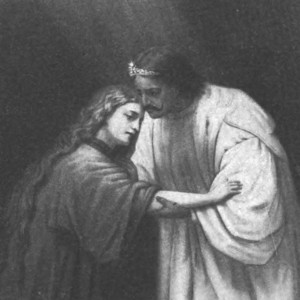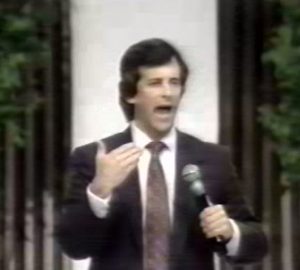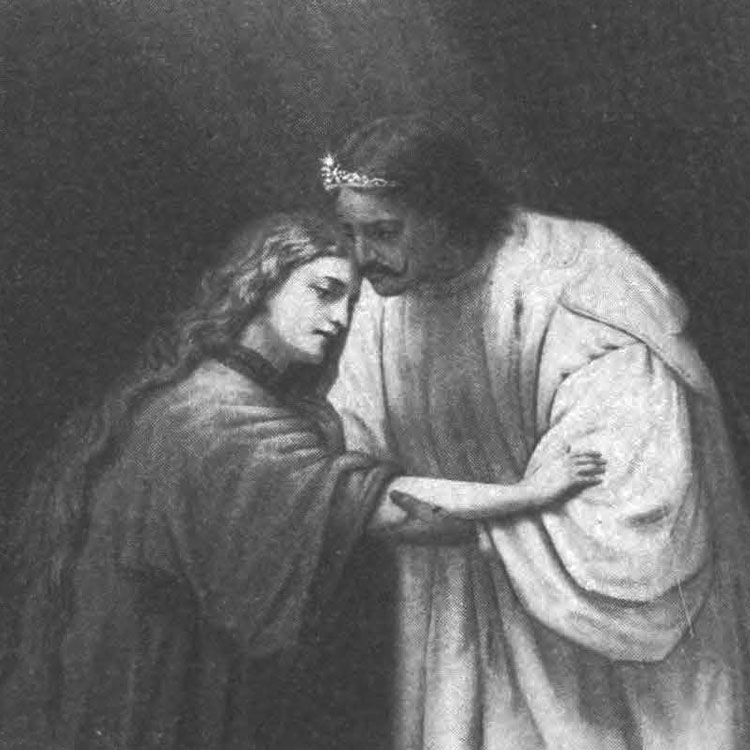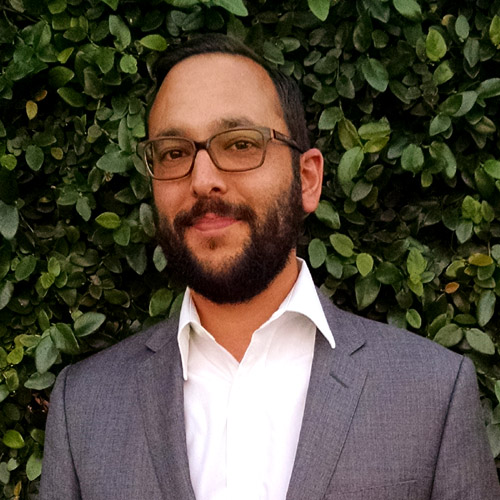Perhaps the most intriguing parts of Daniel Gorman Jr.’s interview with Professor Candy Gunther Brown are the parts that are not there. In his conversation with her on the adoption of yoga and metaphysical healing practices by evangelical Americans, we get little indication that Brown has already written on this subject at length for her book The Healing Gods: Complementary and Alternative Medicine in Christian America, published in 2013 by Oxford University Press. More significantly, although the interview does mention an important court case regarding the legality of yoga-teaching in Encinitas, California public schools, there is no reference to Brown’s significant role in the case.
For those unfamiliar with the case, the details, in brief, are these. In February 2013 Stephen and Jennifer Sedlock, parents of children in the Encinitas Union School District, filed an action against its superintendent Timothy Baird, in which they argued that the implementation of a voluntary Ashtanga yoga program for students violated their religious freedom. The plaintiffs in Sedlock v. Baird were represented by the legal defense organization The National Center for Law & Policy, a group that on its website describes its efforts as “the protection and promotion of religious freedom, the sanctity of life, traditional marriage, parental rights, and other civil liberties” and being “motivated in our endeavors by our faith to keep the doors open for the spread of the Gospel of Jesus Christ.”
The judge in the case ruled that yoga was permissible in the Encinitas schools, and an appeal of the decision was denied in 2015, but it is not hard to see how significant an opposite ruling would have been. Declaring yoga as religious would not only shape future yoga programs in schools, but it could have disrupted the massive American yoga industry in myriad ways.
Brown authored a thirty seven-page declaration for the plaintiffs and testified for a full day in court as their expert witness, describing her role as a natural function and extension of her academic vocation. In an interview for the Oxford University Press blog, Brown said, “I am a religious studies scholar who studies yoga’s cultural mainstreaming in America. I accepted the request because part of my job as a university professor is to educate the public about ‘religion.’” In another blog post, Brown said that the plaintiffs requested her due to her scholarly research on yoga (although she had not previously published on the topic) and she accepted for similar reasons— also to “educate the courts” on the subject.
While it is not unheard of for academics to appear in court to offer their expertise, it is not routine, and Brown appears to have done so with unique investment and enthusiasm, repeatedly expressing her disappointment in not having successfully “educated the courts” in a letter about the ruling to the editor of the online Encinitas Patch and in posts for Psychology Today and The Huffington Post. In any case, and with her connection to this particular case, Brown’s theories on yoga are worth considering carefully. In this response, I trace their articulations in this particular interview for the Religious Studies Project, her court testimony, and her writings online and in print.
For the last several decades, scholars of religion in America have increasingly looked towards the complexity of religious identity, practice, and experience. Rather than telling neat histories of discrete denominations passing through history, or of believers rendered comprehensible through doctrine, scholars have portrayed American religions as being dependent on their social and historical contexts, and they have recognized that individual agents behave and believe in ways that are often idiosyncratic and unpredictable given their organizational affiliations.

In light of this scholarly consensus, Brown’s treatment of religious identity and practice is rather jarring. While she gestures in her interview with the Religious Studies Project towards different and wide-ranging methods, sources, and working definitions, in practice she understands religion in a fashion that is ultimately dependent on relatively simple and deterministic notions of belief and origins.
For instance, rather than the complex and combinative religious worldviews and traditions we see in the work of scholars such as Catherine L. Albanese and Wade Clark Roof, Brown sees “religious” and “non-religious” as clear and absolute categories. Brown assumes the holistic integrity and purity of religious systems, too, and thus the capacity for contagion by and through the introduction of something that can be (or once was) considered occult or metaphysical; simple interaction is sufficient to render an erstwhile consistent system non-Christian and thus to place it at odds with the Christian subjects that Brown assumes to be staggeringly uniform in their belief. It is perhaps this view that allows her to treat “prayer and Bible reading” and “yoga and meditation” in American public schools as interchangeable practices of “religion” despite fifty years of distance and immense social and cultural differences between the two.
In her description of her encounters with Christian consumers of chiropractic treatments for the Religious Studies Project, Brown focuses on the perceived incongruity of their acceptance of chiropractic with the “vitalistic metaphysical framework” of chiropractic’s founder over a century ago. Brown seems unaware of not only the possibility of how complex the worldviews of any given Christian or chiropractor may be—or how such early frameworks can be shaped, forgotten, or repurposed over time—but also of the effects of her position as interviewer and the possibilities of the larger contexts in which these dyadic relationships occur.
Might Christian patients be especially vocal about the Christian identity of their chiropractic doctors as responses to already widespread perceptions of the practice, or the fact that they are being interviewed by a professor of religion? Do they or their doctors subscribe to the same understandings as the founders of chiropractic, or are they more invested in pain relief, the affordability of this particular healing modality (in a country with often limited or non-existent health care), or the closeness and personal attention they get from their DCs as opposed to medical doctors (as do many clients of Complimentary and Alternative Medicine)? We never learn, and we suspect that Brown would be uninterested in such matters, given other aspects of her thesis that something is amiss with Christian chiropractic.
To be blunt, Brown sometimes makes claims and assessments that seem more at home in theological and apologetic circles than in the academic study of religion. She is eager to assume what her Christian subjects should and should not believe, and to find error in their judgement. Perhaps most surprisingly, moreover, Brown’s work assumes the reality of a variety of spiritual forces and divinities. The claimed inability for Christians to render yogic practice compatible to their beliefs, despite any changes in wording or context, because of the essential spiritual forces within physical yogic practice, is a staggering assertion that some of the most enthusiastic yoga teachers would be hesitant to make.
As Courtney Bender argued in a lengthy and at times withering review essay for Church History, Brown’s argument in The Healing Gods uses the work of scholars of religion in a cursory fashion that casts them as supporting pieces of evidence without truly engaging with them at length or in depth. Similarly, in her chapter on yoga, Brown extracts evidence from scholarly and historical works on modern and pre-modern yoga, and on American metaphysical traditions generally, in ways that are decidedly at odds with the spirit and conclusions of those same works.

Mark Singleton, the author of the 2010 work Yoga Body: The Origins of Modern Posture Practice that is cited repeatedly in The Healing Gods, filed a declaration on behalf of the opposing side in the Encinitas case that countered Brown’s claims in her own. Singleton pointed to numerous ancient yogic texts such as the Dattatreyayogasastra and the Hathapradipika, as well as to T. Krishnamacharya, the founder of Ashtanga yoga himself, as parts of a larger body of evidence that cast yoga as being deliberately and consciously non-sectarian and non-religious. Like Catherine Albanese who in 2005 described contemporary yoga as a “new and American yogic product,” Singleton concluded by stating, “In Professor Brown’s Declaration, themes which are associated with yoga as such are, in fact, key concerns of modern American cultural history more generally (such as the relief of suffering; managing mental delusions; concern for how one’s actions effect others; valuing others; energy management; the mind-body connection; attaining a calm and relaxed body and mind etc.)… That yoga literature is used by some yoga teachers to illustrate the importance of such concerns is not an indication that these concerns are religious.” [1]
If Candy Gunther Brown’s work is so divergent with her peers in academia, how does one contextualize her understanding of yoga and her approach to it? In keeping with Bender’s assessment that Brown “exemplifies the ‘caveat emptor’ genre of popular writing about CAM,” I would argue that Brown’s writings on yoga are most similar to the genre of Christian-based criticism of yoga.
The history of yoga in the United States is almost always charted in a way that explains its current popularity and mainstream acceptance: how it went from something so small, foreign, and marginal in the late-nineteenth century to something that seems to exist on every city block and in every gym in America today. Many scholars have attempted to explain this rise in terms of eased immigration restrictions, the Counterculture of the late-1960s, or the efforts of unique and charismatic individuals. While these explanations may have their merits, appraisals of American yoga usually fail to consider that in addition to its growth and successes, yoga has attracted a constant stream of criticism. Even as the practice of yoga itself has shifted from largely being mental and magical to physical and postural, for about 120 years there have been concerns about mental harm and physical injury, moral panics about yoga teachers seducing women and breaking up homes, and mockery of yoga as faddish and bizarre. No current of this criticism has been as strong or steady as the Christian opposition to yoga carried out in sermons, lectures, and in print.
Only a few years after Swami Vivekananda’s arrival in the United States, and in the midst of a wave of discourse surrounding the swami and the (largely female) attention he had been receiving, the Christian Literature Society for India set the tone for this opposition and published a slim volume titled Swami Vivekananda and His Guru which aimed to expose the swami’s efforts in the United States as the work of a fraud, buttressed with dozens of statements by prominent Americans. The early twentieth century was marked by sharp polemics against yoga by authors for Christian and secular outlets, and their charges would be repeated for decades in more general surveys casting swamis and gurus as part of a large and diverse threat to Christian America.
Opposition to yoga as heretical and non-Christian continued as ministers and authors included it in their surveys of cults and New Religious Movements from the 1950s onward, and the rejection of yogic practice also became a feature of many Christian conversion narratives. Over the last few decades, yoga has come under the radar of deliverance ministries and those practicing spiritual warfare who see pranayama and asana as opening the door to demonic forces and oppression.
Of course American Christianity has always been varied and complex, and, like yoga, it too has changed and morphed over time. Pastoral concerns over a handful of attention-grabbing lectures by a swami at the turn of the century are not interchangeable with the current warnings of a megachurch minister to much larger numbers of Christians who attend classes at a local studio. And yet, there have been several threads that have remained consistent throughout the history of Christian opposition to yoga in the United States over the last century and a quarter.
Yoga, in this discourse, is a cover for and is inseparable from Hinduism. Yoga cannot be simply reduced to any of its parts (exercise, self-improvement) or what its advocates or adherents claim it to be. Yoga either leads to an adoption of Hinduism, or it already contains the essence of it— and thus practitioners of yoga are by default also practicing Hindus. Hinduism itself is routinely conjured up in the most simplistic and shocking terms, and, described as consisting of magic, idolatry, or goddess-worship (usually with images of Kali), it is rendered incompatible with Christianity. Even some of the same wording and metaphors have remained consistent over time. We find the same language of yoga teachers “mesmerizing” and “seducing” students with their teachings, as well as similar comparisons between the serpentine kundalini energy and the serpent in the Garden of Eden, from pre-WWI articles to 1990s DVDs to today’s YouTube videos.
Not only do we see reflections of this genre in Brown’s general views of yoga, but there are striking parallels between Brown’s work and the genre of Christian anti-yoga critique. In her testimony, Brown described the physical movements within yogic practice as “yoga rituals,” which can (according to Brown) change the practitioner’s worldview, ethos, and behavior regardless of belief, intent, or context. Such claims and phrases sound as if derived straight from the 2006 book Yoga and the Body of Christ by the late Christian apologist Dave Hunt, who also called yogic poses “rituals” and claimed that “one cannot adopt even the physical aspects of yoga without becoming spiritually ensnared.”(38)
Also in her Encinitas-case testimony, Brown stated that she considers karate and Taekwondo (even in Olympic competition) to be religious like yoga. This is an unusual grouping that few academic scholars of religion would make, but it can be found in the seminal and influential 1973 deliverance manual Pigs in the Parlor which, like Brown, warns of “religious errors” that can be found in “such popular interests as yoga exercises and karate which cannot be divorced from heathen worship.”(29) In statements that echoed pieces from a century earlier, like Mabel Daggett’s “Heathen Invasion of America,” Brown also testified that Ashtanga yoga was a product of “intentional marketing” that deceived its practitioners through camouflage and conspiracy, and that yoga instructors were planted in the environs of the school district.
Another common feature of this genre has been the often ironic necessity for Christian opponents of yoga to take their subject at its word and on its own terms. We can find numerous historical antecedents of critics in early twentieth-century America who would accept the definitions of yoga, statistics of membership, and claims to power given by South Asian yoga teachers to show the grave threat they posed to Americans, and then condemn those same teachers as fraudulent and untrustworthy in the next paragraph or page.
Andrea Jain has argued that the “Yogaphobic” and “Hindu Origins” positions on yoga in current cultural debates— respectively belonging to evangelical Christian opposition to modern yogic practice and Hindu claims to the same— both depend on many of the same assumptions for the arguments of either side to be valid: yoga needs to be ancient, Indian, and religiously Hindu. It makes sense, then, that Brown would need to look to the self-advancing works of yoga teachers and groups like the Hindu American Foundation, frequently over and above scholarship, to buttress her claims of yoga as Hinduism full-stop.
Finally, there is the verdict in the Encinitas case. A pithy recounting of Judge John Meyer’s ruling could describe it as such: the yoga program was religious, but not religious enough to be considered as religion. While this reasoning may seem contradictory on its face— Brown herself described it as “frankly confusing” and “astounding”— it is sane and reasonable upon closer inspection. For those in the academic study of religion as well as non-specialist members of the public, we are familiar on some level with the variety, complexity, subtlety, and gradations of religion: how spiritual and secular worlds often blend and flow into one another, how dependent religious meaning is upon individuals, and how difficult it is to map definitions of religion onto the real world of practice and experience. It is not possible to divide the world— be it in a yoga class, a chiropractor’s office, or elsewhere— into what is simply “religion” and “not religion” like separating so many sheep from goats.
Meyer eventually rejected Brown’s testimony in the Encinitas case and commented that “Dr. Brown has an obvious bias and I think can almost be determined to be on a mission against Ashtanga yoga.” Brown protested the charges of bias in a blog post, seeing “the only possible basis” for that claim in a mistaken assumption that she was funded by the Christian Wilfred S. Templeton Foundation instead of the non-apologetic John Templeton Foundation. Claims of bias are more understandable in light of Brown’s actions on behalf a group like the NCLP, though, which put a biblical-based one-page guide on its website to inform the public that yoga was not Christian since Christians “should not worship or bow down to idols” which are “connected to demonic activity.”
More importantly, the court may have been unpersuaded by Brown’s testimony because she stands apart from others in the discipline of religious studies and the subfields of work on modern yoga and the American metaphysical tradition. American courts have long used standards for scientific evidence and expert testimony— such as the Frye test (1923) and later the Daubert test (1993)— that require such evidence and testimony to be generally accepted by their respective scholarly communities. To diverge sharply from the larger conversations and bodies of work of one’s peers may sometimes be less the mark of a rebellious maverick than a reason to be viewed askance.
References
[1] See Catherine Albanese, “Sacred (and Secular) Self-Fashioning: Esalen and the American Transformation of Yoga,” in Jeffrey J. Kripal and Glenn W. Shuck (eds.), On the Edge of the Future: Esalen and the Evolution of American Culture (Bloomington: Indiana University Press, 2005), 45.


